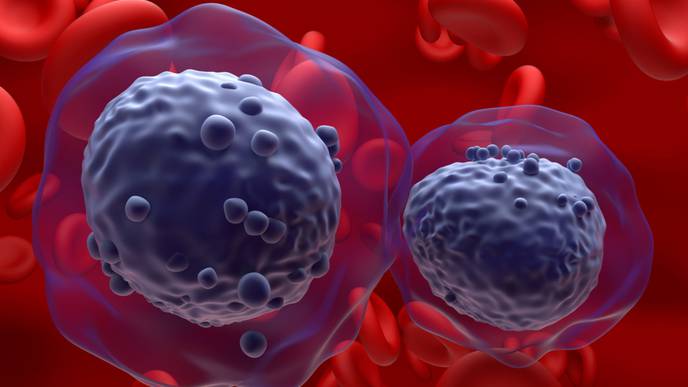ReachMD
Be part of the knowledge.™Scientists Create a Tool to Identify Individuals at Risk of Developing Different Myeloid Leukemias

by Wellcome-MRC Cambridge Stem Cell Institute
Scientists have created a new test for identifying people at risk of developing acute myeloid leukemia and related cancers, years before they do. The new platform, "MN-predict," will allow doctors and scientists to identify those at risk and to design new treatments to prevent them from developing these potentially lethal cancers.
The study is published in Nature Genetics.
Researchers at the Wellcome-MRC Cambridge Stem Cell Institute (CSCI), the University of Cambridge's Department of Haematology, and Instituto de Investigación Sanitaria del Principado de Asturias (ISPA) analyzed data from more than 400,000 individuals participating in the United Kingdom Biobank.
Using this data, the scientists have created "MN-predict," a platform for predicting the risk of developing blood cancers such as acute myeloid leukemia, myelodysplastic syndromes and myeloproliferative neoplasms over a 10–15-year period.
This test, now available in NHS clinics, requires patients to provide a blood sample from which DNA is extracted for limited sequencing, alongside basic blood cell counts. With this information, MN-predict identifies those at high risk of any of these cancers and can be used in specialist clinics for leukemia prevention.
Professor George Vassiliou, senior author of the study said, "We all know that prevention is better than cure, but it is not easy to prevent diseases like leukemia without knowing who is at risk. MN-predict makes it possible to identify at-risk individuals, and we hope it can become an essential part of future leukemia prevention programs."
The myeloid neoplasms are a group of related cancers encompassing acute myeloid leukemia, myelodysplastic syndromes and myeloproliferative neoplasms. Treatments for these cancers have improved in the last few years, but most cases remain incurable.
In the last few years, scientists discovered that these cancers develop over decades through the accumulation of DNA mutations in blood stem cells, the cells responsible for normal blood formation. These mutations encourage these stem cells to grow faster than normal and, as more mutations accumulate, they can progress towards leukemia.
Thankfully, while mutations that promote cell growth are common, leukemia develops only in a small minority of cases. Identifying these cases early on helps efforts to prevent the cancers from developing.
Dr. Muxin Gu, first author of the paper, said, "We hope that MN-predict will help clinicians to identify people at risk of myeloid cancers and use novel treatment to prevent the cancers from developing."
Dr. Pedro M. Quiros, joint senior author of the study, said, "Despite some recent advances in their treatment, these cancers remain lethal to many sufferers. We hope that our efforts will help advance prevention in favor of treating the full-blown disease."
More information: Gu, M. et al, Multiparameter prediction of myeloid neoplasia risk, Nature Genetics (2023). DOI: 10.1038/s41588-023-01472-1www.nature.com/articles/s41588-023-01472-1
Provided by Wellcome-MRC Cambridge Stem Cell Institute
Citation: Scientists create a tool to identify individuals at risk of developing different myeloid leukemias (2023, August 24) retrieved 24 August 2023 from https://medicalxpress.com/news/2023-08-scientists-tool-individuals-myeloid-leukemias.html
This document is subject to copyright. Apart from any fair dealing for the purpose of private study or research, no part may be reproduced without the written permission. The content is provided for information purposes only.
Facebook Comments